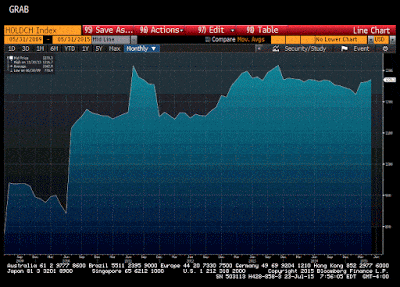Getting Ready for the Week
The US dollar is mostly firmer, with the dollar-bloc under-performing. Month-end flows appear to be favoring the euro though the Swiss franc is also firmer. While the dollar is within yesterday’s ranges against the euro and yen, it is firmer against sterling for the third consecutive session. Asian stocks and bonds were mostly higher though Chinese shares fell. In Europe, bond yields are slightly higher, and the equity markets are narrowly mixed.





